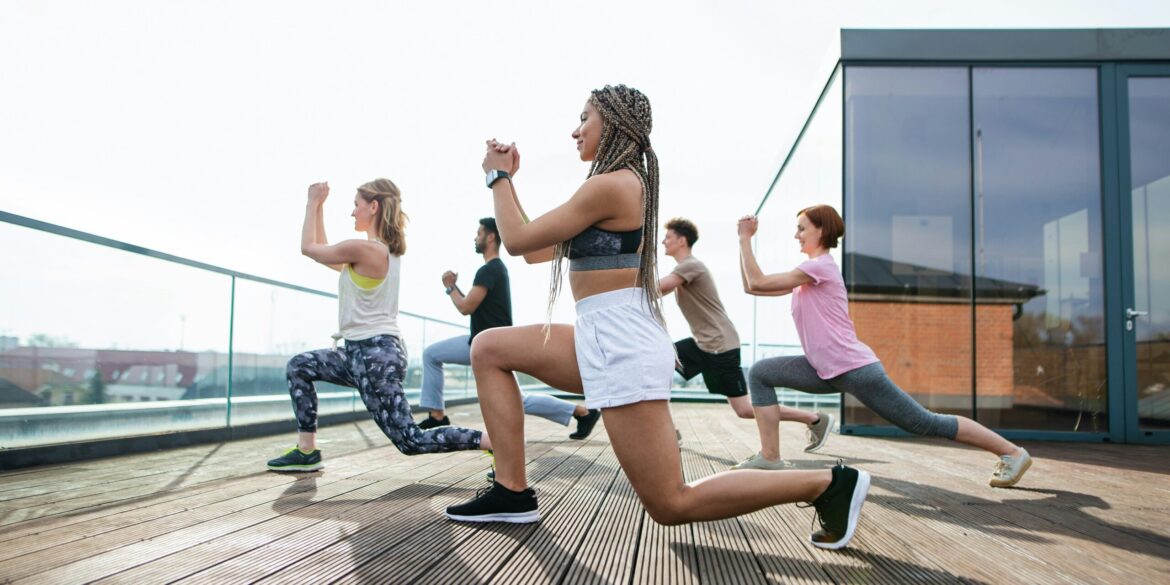The shift toward active lifestyles is reshaping not just personal fitness routines but the entire sports industry. In 2025, an increasing number of Americans are embracing health and wellness as key components of their everyday lives, and this trend is influencing both recreational and competitive sports. Whether it’s a rise in functional fitness training, the popularity of outdoor activities, or the increasing role of technology in sports, the landscape of physical activity is changing in ways that make sports more accessible, diverse, and connected to our well-being.
Popular Fitness Trends of 2025:
-
Functional Fitness:
Functional fitness—exercise that mimics everyday movements—is more popular than ever. CrossFit, HIIT (High-Intensity Interval Training), and bodyweight exercises have become staples for those looking to build strength, flexibility, and endurance. This form of training helps individuals improve their daily movement efficiency, making it a favorite among people of all fitness levels. Its impact on the sports industry is evident, as athletes are increasingly focusing on strength and mobility training that enhances performance in sports and life. -
Outdoor Adventure Sports:
As mental health and wellness take center stage, outdoor sports like hiking, trail running, rock climbing, kayaking, and cycling are becoming mainstream activities. Many people are opting for outdoor experiences over traditional gym workouts, seeking not only physical exercise but also mental clarity and connection to nature. In response, sports brands and event organizers are creating more outdoor competitions and adventure races to meet the growing demand for outdoor challenges. These events foster camaraderie, well-being, and environmental consciousness, offering athletes a chance to compete and engage with nature. -
Technology in Sports:
Wearable fitness technology, including smartwatches and fitness trackers, continues to revolutionize the way athletes and enthusiasts track their progress. Devices like the Apple Watch, Garmin, and Fitbit provide real-time data on heart rate, steps, and calories burned, allowing users to set personalized goals and track improvements. In addition, the rise of virtual reality (VR) in training has gained traction, with VR fitness platforms allowing people to train in simulated environments, enhancing their experience and making workouts more engaging. -
Esports and Virtual Sports:
Esports has transcended its niche status to become one of the most popular forms of competition worldwide. Major gaming events, such as the League of Legends World Championship and the Fortnite World Cup, now draw millions of viewers and offer lucrative prize pools. Esports organizations have established professional leagues, offering career opportunities for players, coaches, and analysts. The growth of esports is also expanding the definition of “sports,” as people are increasingly participating in online sports leagues, developing skills in gaming and virtual competition.
The Impact of Active Lifestyles on Traditional Sports:
-
Revitalizing Traditional Sports:
The rising popularity of active lifestyles has rejuvenated interest in traditional sports such as tennis, golf, and running. These activities are becoming more accessible to people of all ages and fitness levels. For example, recreational tennis leagues and community 5K runs are seeing increased participation as more individuals embrace fitness as part of their lifestyle. Major sports leagues like the NBA, NFL, and MLB are also tapping into this trend by offering more community programs and engaging fans through fitness-related content. -
Youth Engagement:
The surge in active living is also making a significant impact on youth sports. More children are participating in after-school sports programs and fitness classes, where the focus is on enjoyment, physical literacy, and teamwork rather than early specialization in a single sport. This shift is helping to develop a generation of well-rounded athletes who will benefit from improved physical fitness, mental resilience, and lifelong healthy habits.
Conclusion:
The rise of active lifestyles is transforming the way we engage with sports, both recreationally and professionally. As fitness trends like functional training, outdoor activities, and technology-driven fitness grow, the landscape of physical activity is becoming more diverse, inclusive, and connected to overall well-being. Whether it’s through improving physical performance, adopting new fitness technologies, or embracing outdoor challenges, the future of sports is rooted in the idea that fitness is for everyone, at every stage of life.


